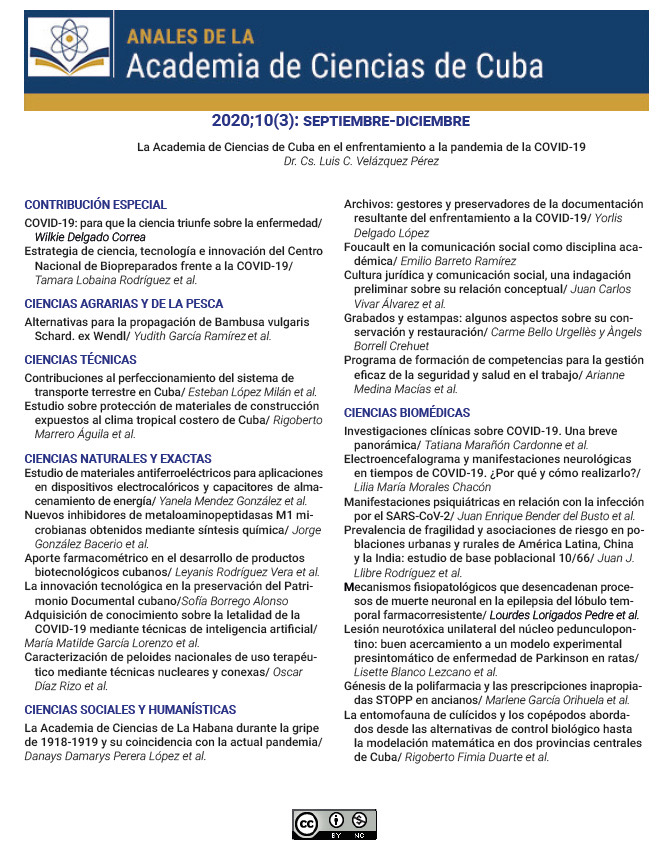Unilateral neurotoxic lesion of the pedunculopontine nucleus: a good approach to the pre-symptomatic experimental model of Parkinson disease in rats
Keywords:
pedunculopontine nucleus, substantia nigra pars compacta, neurodegeneration, oxidative stressAbstract
Introduction. The pedunculopontine nucleus (NPP) plays an essential role in motor control. Literature on the topic suggests that PPN participates in the onset and progression of Parkinson's disease (PD) and that its early degeneration precedes the death of nigral dopaminergic neurons. Objectives: to determine the effect of neurotoxic injury of PPN on motor function, nigrostriatal oxidative homeostasis and gene expression of proteins responsible for dopaminergic homeostasis.Methods. Motor performance was evaluated by beam, cylinder and footprint tests. Biochemical studies focused on catalase enzymatic activity (CAT), cholinesterase (AChE AE) and concentrations of malondialdehyde (MDA) and glutathione (GSH). The molecular studies included the expression of tyrosine hydroxylase (TH) mRNA; vesicular dopamine transporter (VMAT), brain-derived neurotrophic factor (BDNF) and dopamine transporter (DAT).
Results. Behavioral studies revealed slight coordination disorders and subtle changes in the walking pattern of rats with pontine injury. Biochemical studies showed an early increase in CAT activity as well as concentrations of MDA and GSH. Molecular studies demonstrated a transient increase in nigral expression of BDNF and TH together with a marked decrease in gene expression of VMAT and DAT.
Downloads
Published
How to Cite
Issue
Section
License
The journal Anales de la Academia de Ciencias de Cuba protects copyright, and operates with a Creative Commons License 4.0 (Creative Commons Attribution-NonCommercial License 4.0). By publishing in it, authors allow themselves to copy, reproduce, distribute, publicly communicate their work and generate derivative works, as long as the original author is cited and acknowledged. They do not allow, however, the use of the original work for commercial or lucrative purposes.
The authors authorize the publication of their writings, retaining the authorship rights, and assigning and transferring to the magazine all the rights protected by the intellectual property laws that govern in Cuba, which imply editing to disseminate the work.
Authors may establish additional agreements for the non-exclusive distribution of the version of the work published in the journal (for example, placing it in an institutional repository or publishing it in a book), with recognition of having been first published in this journal.
To learn more, see https://creativecommons.org






